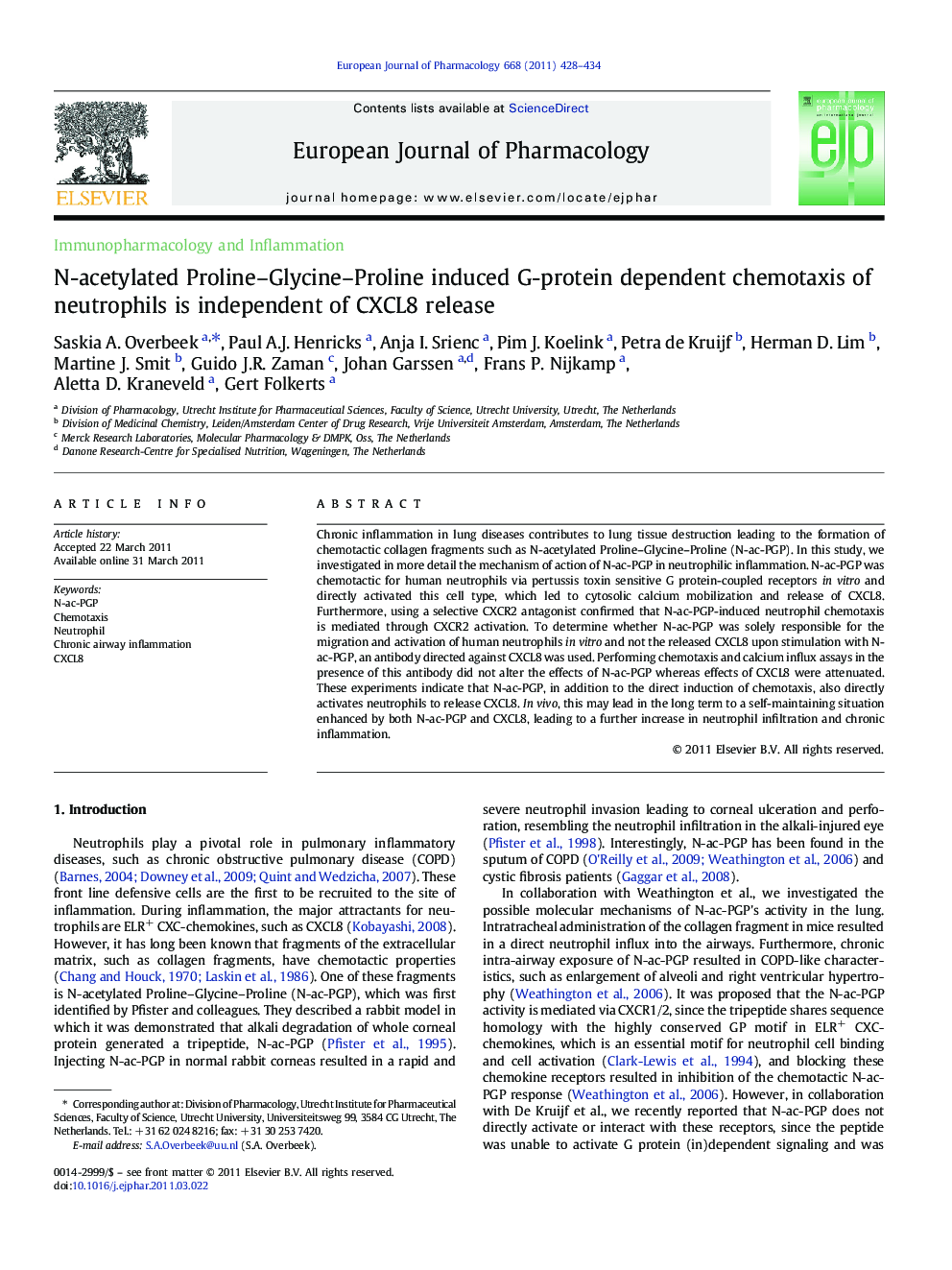| کد مقاله | کد نشریه | سال انتشار | مقاله انگلیسی | نسخه تمام متن |
|---|---|---|---|---|
| 2532497 | 1559015 | 2011 | 7 صفحه PDF | دانلود رایگان |

Chronic inflammation in lung diseases contributes to lung tissue destruction leading to the formation of chemotactic collagen fragments such as N-acetylated Proline–Glycine–Proline (N-ac-PGP). In this study, we investigated in more detail the mechanism of action of N-ac-PGP in neutrophilic inflammation. N-ac-PGP was chemotactic for human neutrophils via pertussis toxin sensitive G protein-coupled receptors in vitro and directly activated this cell type, which led to cytosolic calcium mobilization and release of CXCL8. Furthermore, using a selective CXCR2 antagonist confirmed that N-ac-PGP-induced neutrophil chemotaxis is mediated through CXCR2 activation. To determine whether N-ac-PGP was solely responsible for the migration and activation of human neutrophils in vitro and not the released CXCL8 upon stimulation with N-ac-PGP, an antibody directed against CXCL8 was used. Performing chemotaxis and calcium influx assays in the presence of this antibody did not alter the effects of N-ac-PGP whereas effects of CXCL8 were attenuated. These experiments indicate that N-ac-PGP, in addition to the direct induction of chemotaxis, also directly activates neutrophils to release CXCL8. In vivo, this may lead in the long term to a self-maintaining situation enhanced by both N-ac-PGP and CXCL8, leading to a further increase in neutrophil infiltration and chronic inflammation.
Journal: European Journal of Pharmacology - Volume 668, Issue 3, 15 October 2011, Pages 428–434